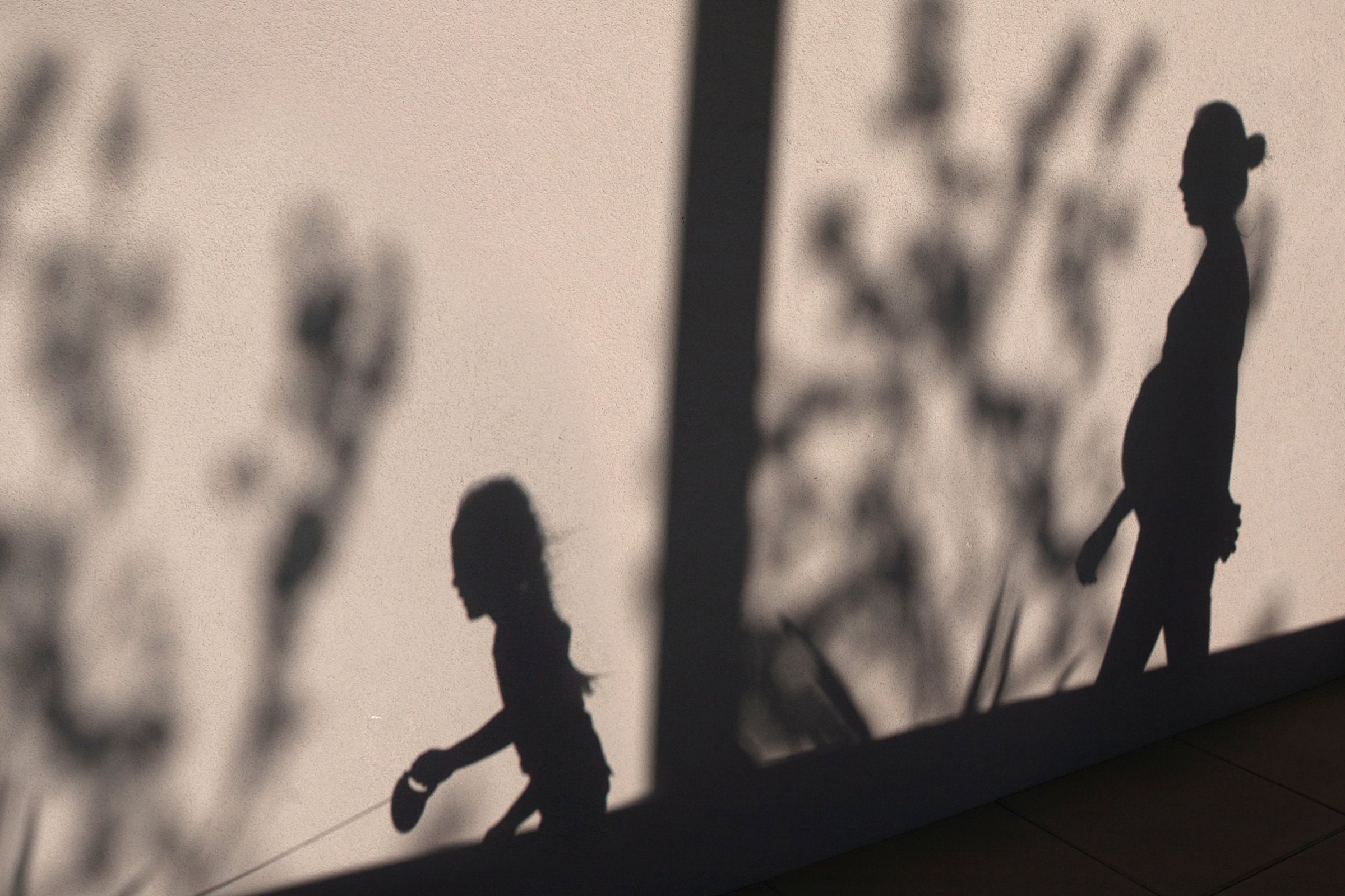
Holly Ryan knows the biological father of her children has two sisters, is a Coldplay fan, and doesn’t like eating chicken in pasta dishes. She knows his mother is a nurse and his father is a policeman, and that his aunt has green eyes and curly hair. She even has a photo of him as a child, and an audio recording of his voice.
But Ryan, 41, doesn’t know his name and has never met him. More than six years ago, she decided she wanted to start a family. “Once you commit to trying to get pregnant, it becomes a kind of obsession,” says Ryan, the director of a talent agency for TV directors, producers and editors. “As a single, gay woman, I knew in order to get from A to B, I had to be strategic about the quickest and least murky route, which I concluded was online shopping for a sperm donor.”
Like thousands of women in Europe each year, Ryan turned to Denmark. Today, the Nordic country of 5.7 million people has the greatest proportion of babies born through assisted reproductive technology (ART) — while approximately 1.7% of all infants born in the U.S. are conceived using ART, an estimated 8 to 10% of Danish babies are born thanks to these techniques — but it’s not just the residents who benefit from its treatment options, notably its booming sperm industry. With some of the world’s most liberal legislation on fertility treatment, as well as a less stigmatized culture around the procedures, Denmark has become an attractive destination for women from other countries as well.
“In terms of fertility, people in Denmark are just more open-minded and less judgmental,” Ryan says.
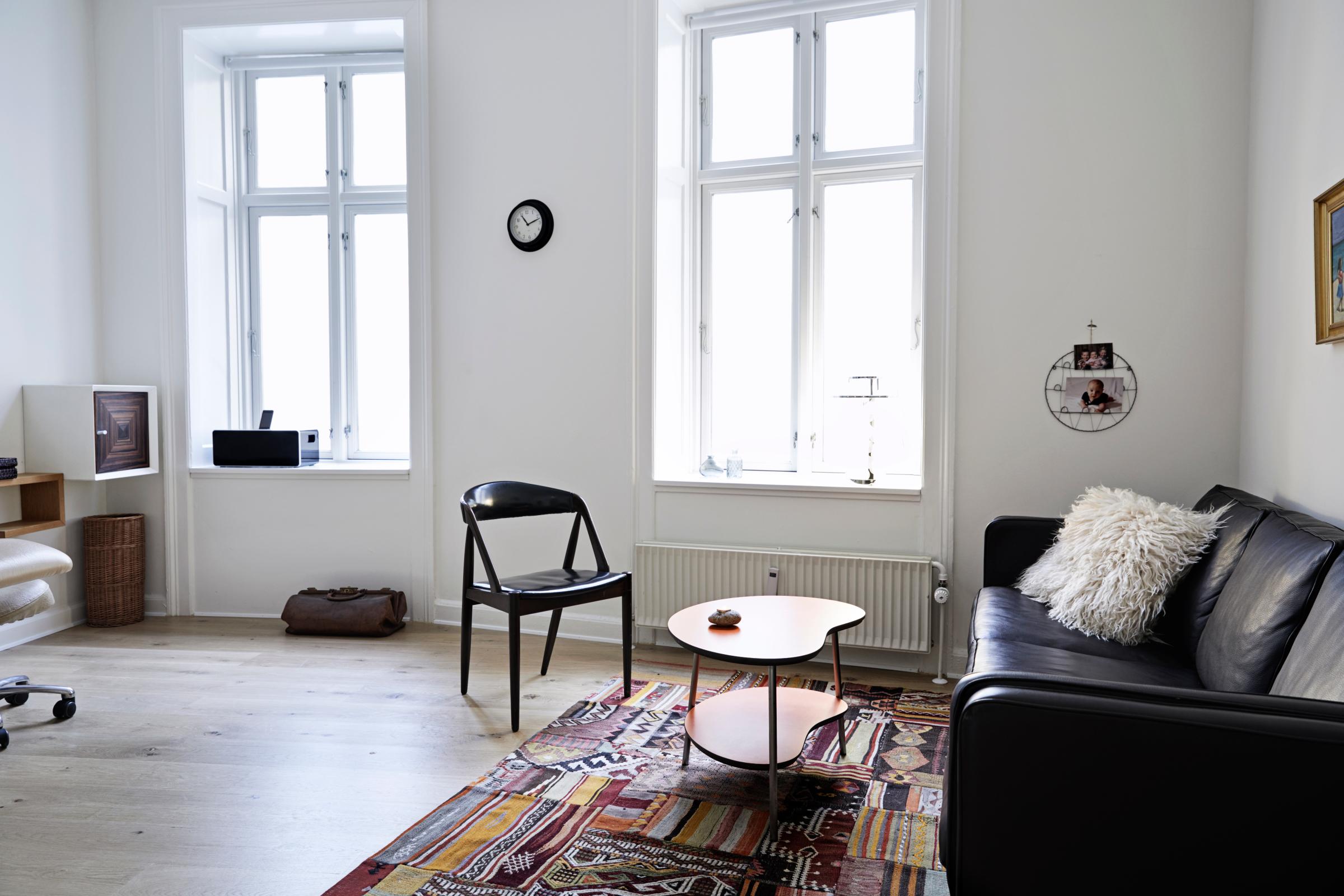
If not for the women wearing white lab coats, StorkKlinik, a private fertility clinic in central Copenhagen, would feel more like a boutique hotel than a medical facility. The clinic is decorated with stylish Scandinavian furniture, soft lighting, and leafy green plants. Contemporary art covers the walls — even in the treatment rooms, where extra-wide medical beds (without stirrups) allow couples to lie and cuddle together so that the insemination procedure feels less clinical.
As in most countries, the vast majority of people using ART in Denmark are heterosexual couples. But StorkKlinik, founded in 1999 by the aptly named Nina Stork, has always focused on helping single and lesbian women become parents, groups that still make up at least half of their patients. At that clinic, patients coming from abroad — mostly from Sweden, Germany, Norway, France, Switzerland and the United Kingdom — received more than 90% of the 3,930 in vitro fertilization (IVF) and intrauterine insemination (IUI) treatments in 2017.
Ryan was one of them. After giving birth to her first son, Johan, in 2014 after IUI treatment at StorkKlinik, she returned a few years later to get pregnant again. She is now due to deliver her second child in early 2019. For both pregnancies, she used the same sperm donor, who had registered as open — meaning a child can contact the clinic or sperm bank at the age of 18 and be informed of their biological father’s identity. “I always knew I wanted to have two kids and I thought hopefully I’ll be married,” Ryan says. “But I also said to myself even if I didn’t meet Mrs. Right, I’d just forge on and have another child by myself.”
StorkKlinik moved to its current location eight years ago, but it has long occupied an important place in Denmark’s history of fertility treatment. In 1996, the Danish Parliament passed a law making it illegal for doctors to help lesbian and single women get pregnant via ART. Stork, a midwife who had previously undergone IUI and IVF with her partner Inger, had not gotten pregnant before the law went into effect in 1997. But she discovered a loophole: midwives could treat these women, even if doctors couldn’t. In 1999, she set up the Stork fertility clinic. Other midwives as well as people in related medical fields followed suit, opening their own private clinics offering IUI.
Stork became an active voice in Danish politics, sparking a debate over why lesbian and single women were not considered as suited for motherhood as heterosexual women with male partners. “Because they were so outspoken, they became known in Europe and single women and lesbians started coming to Denmark,” says Stine Willum Adrian, an associate professor at Denmark’s Aalborg University, who has published several papers on the fertility industry.
The Danish Parliament eventually passed a bill amending the fertility law, making it legal from January 2007 onward for doctors to perform IUI and IVF for lesbian and single women. Since then, StorkKlinik has expanded to employ gynecologists and embryologists to offer a variety of other reproductive technologies, including IVF, intracytoplasmic sperm injection (ICSI), and egg donation. In 2015, it joined the VivaNeo group, a network of fertility clinics that operates in other parts of Denmark, as well as Germany, Austria, and the Netherlands.
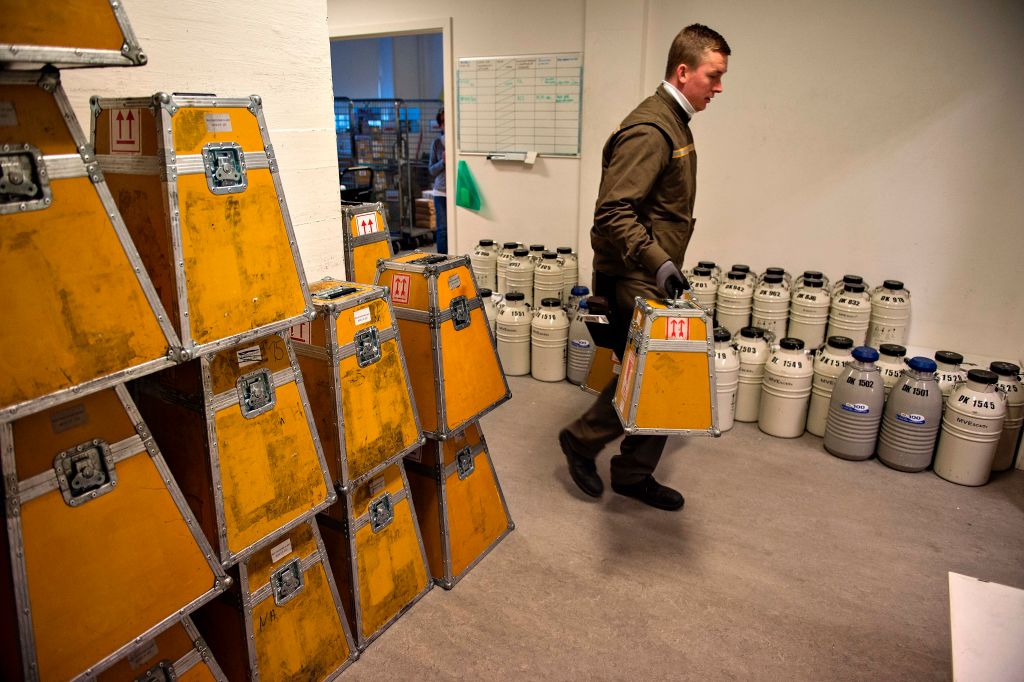
It took Ryan six cycles of IUI to get pregnant each time, and she regularly flew from London to Copenhagen, where she fortunately had several friends she could stay with. “But fertility is an expensive hobby,” she says, laughing.
Although most European countries, including Britain, fully fund or subsidize ART for those who meet certain criteria, the cost can be a significant barrier for those who do not qualify — those who are above the age limit, for instance, or who are single or who already have a child. Some women also prefer private treatment in order to avoid long wait times. An average unsubsidized IVF cycle costs between $2,500 and $5,000 in Europe, about $6,000 in the U.K., and around $12,000 in the United States. But because most patients will have multiple cycles, small cost discrepancies between countries can make a significant difference, leading many British women to take advantage of the cheap flights to Denmark, or other countries in the continent, for treatment.
Many women in Europe also come to Denmark to avoid the restrictions they face at home: in neighboring Sweden, women cannot access treatment after turning 42 and single women were not covered by government funding until April 2016. (In Denmark, the cost of three cycles of IVF for a first child is covered by the tax-financed public health service for women residing in Denmark up to the age of 40, but all women — including those from abroad — can seek private treatment until they turn 46.) Meanwhile in France and many parts of Germany, doctors can still deny IVF and IUI to single and lesbian women; in Austria and Norway, a lesbian woman in a relationship can be treated but single women can’t be.
And for those eager to have a child as soon as possible, there’s another reason Denmark is a draw: no waiting time for IUI and other treatments requiring a sperm donor due to the country’s high donation rates — Denmark is home to the one of the world’s largest sperm banks, Cryos International, and exports more than 90% of Danish sperm to other E.U. countries. Unlike the U.S., Denmark is bound by an E.U. directive that forbids the commercial exchange of sperm and egg cells, intended to reduce the risk of trafficking and the transmission of diseases. That means donors can only be compensated for their time and inconvenience; countries can decide what is reasonable compensation for altruistic donation. In Denmark, sperm donors receive roughly $40 to $75 for each donation, and egg donors receive roughly $1,073, up from $368 before 2016.
Research has found that different factors affect men’s decisions to become sperm donors. Some men donate because they have the option to be anonymous in Denmark (which is not the case in many European countries), while others donate for the opposite reason: because they are allowed to register as an open donor. And while compensation is important for some men, others have indicated they would donate anyway. According to Sebastian Mohr, author of Being a Sperm Donor: Masculinity, Sexuality, and Biosociality in Denmark, sperm donation and other reproductive technologies are socially acceptable in Denmark because most Danes know a child conceived with the help of ART or an adult who has undergone treatment. There is also a widespread idea “that having a child is part of being a good citizen,” says Mohr. “Reproductive technologies have reinforced a belief that every Danish citizen has the right to be a parent.”
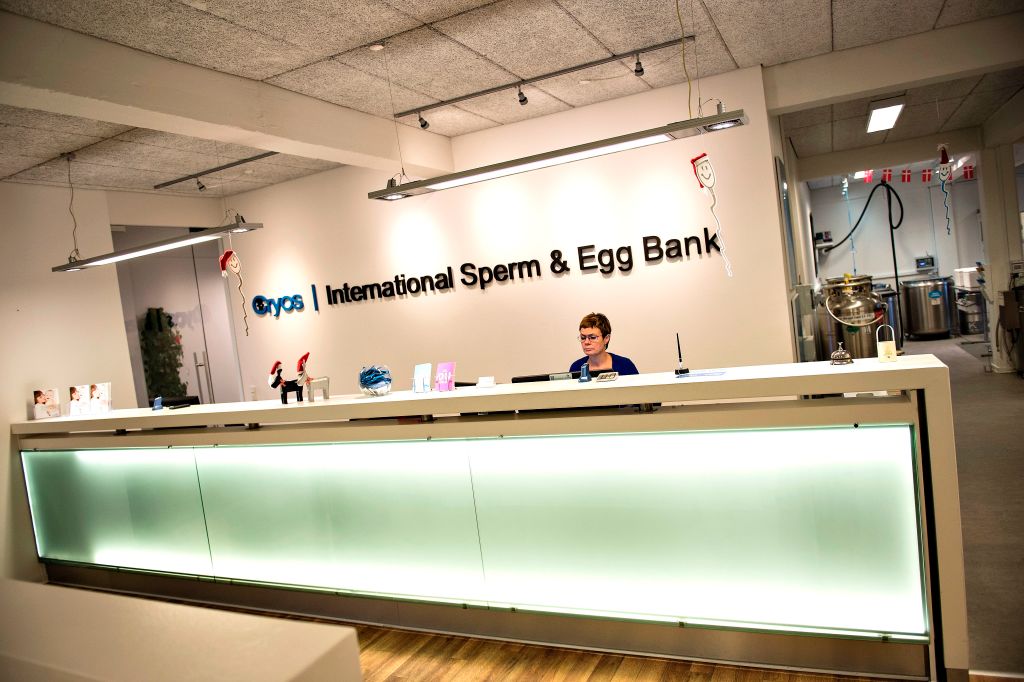
In the summer of 2018, Neeley Moore traveled from London to StorkKlinik to be among the first women to make use of a newly amended law in Denmark allowing double donation: where both the egg and sperm cells come from donors.
Moore’s blood tests in the U.K. had indicated that her levels of the anti-Mullerian hormone (AMH), which tracks egg supply, were too low for her to use her own eggs but she decided to try anyway. Moore, a 44-year-old reflexologist, is in a five-year relationship with a man who is 25 years older than her and who already has children from a previous marriage. “We live separately, and this was always going to be my own journey,” she says. She had two rounds of IVF in the U.K., privately, using her own eggs but they didn’t implant. Then she heard about the clinic in Copenhagen.
Before January 2018, Danish legislation stipulated that a child must be genetically linked to at least one of its parents — either via their mother’s egg or their father’s sperm. This presented a problem for three groups: heterosexual couples who both suffered from fertility issues, single women with poor egg quality, and lesbian couples in which the designated birth mother couldn’t conceive using her own eggs. “Before this year, we couldn’t help single and lesbian women with double donation if they struggled with their own fertility,” says Anita Elverdahl, the egg donation coordinator at StorkKlinik.
As health workers, including those at StorkKlinik, and patients’ advocates raised concerns about Danish women traveling abroad to Spain and other countries for treatment, the Danish Parliament began to consider easing the ban. In the end, Denmark decided that at least one donor must not be anonymous in double donation. Moore, who got pregnant on her first attempt in Copenhagen and is due to deliver in March 2019, opted to use open donors for both her egg and sperm donors. “It’s not about me, it’s about the child,” she says. “I’ve got enormous gratitude and respect for how this life is being created and I will support the child in their wishes.”
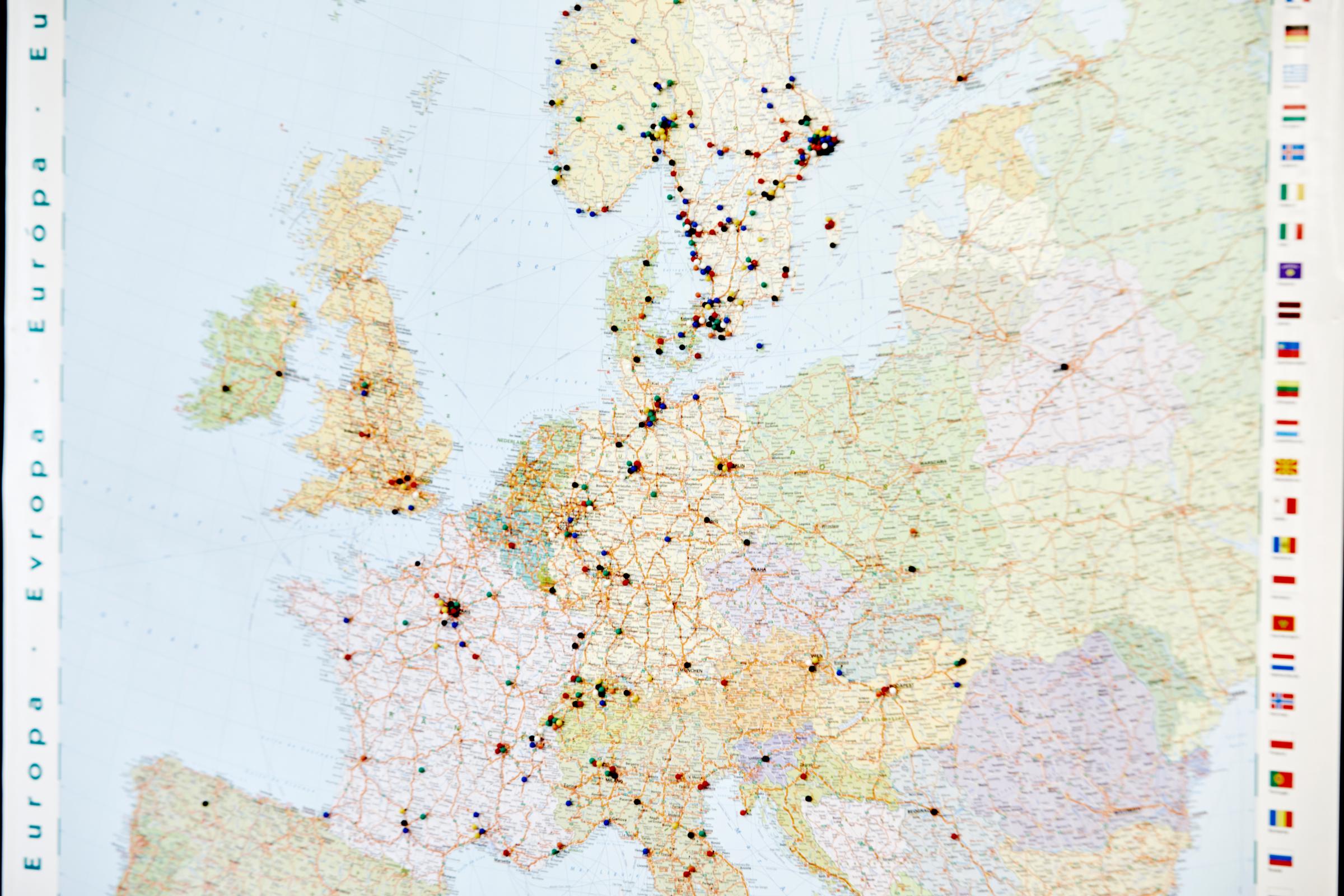
For all its liberalization of fertility laws, Denmark still has certain barriers that affect access to IVF and other procedures. For one, there’s a shortage of egg donors, particularly for ethnic minority groups. Adrian, the associate professor at Aalborg University, says ideas of what is “natural” continue to inform parliamentary debates about egg donation. “People talk about egg cells as a gift, while semen is seen as something that moves around anyway,” she says. “In fact, there’s no real difference between them.” And yet despite the many commercial sperm banks (which are allowed to receive payment even though the donors merely receive compensation for their time and inconvenience), there are no commercial egg banks in Denmark because the sale of eggs in any capacity remains illegal. Commercial surrogacy is also illegal in Denmark —surrogacy is only allowed if a surrogate uses her own eggs and is willing to give the baby up for adoption without payment — so Danes looking for surrogates tend to travel to the U.S. or Mexico.
Surrogacy is also illegal in Denmark unless the woman uses her own eggs and gives the child up for adoption without payment; Danish law recognizes surrogates as mothers, no matter what genetic relationship they have with the newborn so Danes looking for surrogates tend to travel to the U.S. or Mexico.
And yet Denmark remains a top destination for those hoping to start a family. In the hallway of StorkKlinik, a map of Europe is dotted with pins showing where patients have come from. Framed photos of smiling babies line the hallways, along with group portraits of the annual Stork Event, a summer gathering of families helped by Stork that has taken place since 2006. Parents can help themselves to red-and-white soft toy storks to give their children; shelves hold books like Hvor er Karlas far? (Where Is Karla’s father?) to help single women explain to their situation to their donor-conceived children.
“If you’re going down the route of choosing a donor, going to a clinic, putting yourself through all of that, you have to want a child to such a degree that it will carry you through,” says Ryan, who like many of Stork’s clients, came in part because she had a friend who had conceived there; now, nine of her friends have children thanks to StorkKlinik. “It’s ammunition for motherhood. And today, I’m part of this whole spider web of other women who have been through the same thing.”
More Must-Reads from TIME
- Caitlin Clark Is TIME's 2024 Athlete of the Year
- Where Trump 2.0 Will Differ From 1.0
- Is Intermittent Fasting Good or Bad for You?
- The 100 Must-Read Books of 2024
- Column: If Optimism Feels Ridiculous Now, Try Hope
- The Future of Climate Action Is Trade Policy
- FX’s Say Nothing Is the Must-Watch Political Thriller of 2024
- Merle Bombardieri Is Helping People Make the Baby Decision
Write to Naina Bajekal/Copenhagen at naina.bajekal@time.com